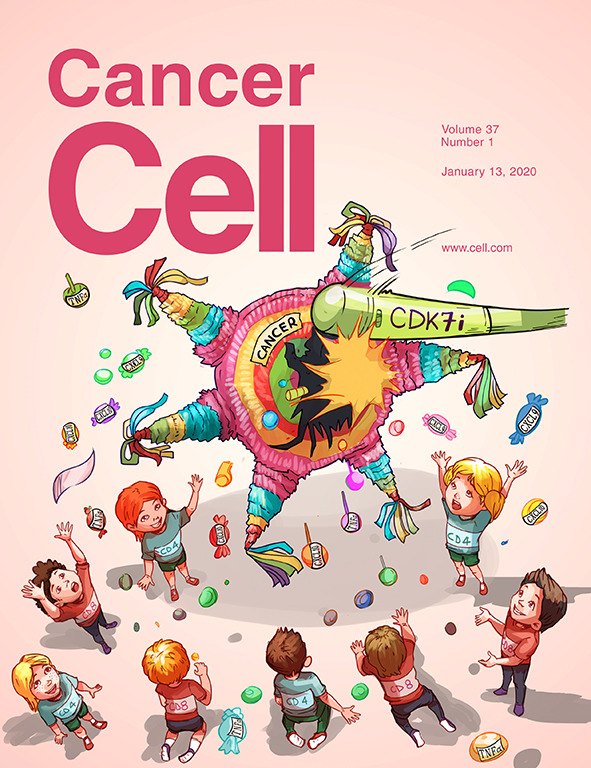Small-molecule RNA therapeutics to target prostate cancer
IF 48.8
1区 医学
Q1 CELL BIOLOGY
引用次数: 0
Abstract
Tuning protein expression by targeting RNA structure using small molecules is an unexplored avenue for cancer treatment. To understand whether this vulnerability could be therapeutically targeted in the most lethal form of prostate cancer, castration-resistant prostate cancer (CRPC), we use a clinical small molecule, zotatifin, that targets the RNA helicase and translation factor eukaryotic initiation factor 4A (eIF4A). Zotatifin represses tumorigenesis in patient-derived and xenograft models and prolonged survival in vivo alongside hormone therapy. Genome-wide transcriptome, translatome, and proteomic analysis reveals two important translational targets: androgen receptor (AR), a key oncogene in CRPC, and hypoxia-inducible factor 1A (HIF1A), an essential cancer modulator in hypoxia. We solve the structure of the 5′ UTRs of these oncogenic mRNAs and strikingly observe complex structural remodeling of these select mRNAs by this small molecule. Remarkably, tumors treated with zotatifin become more sensitive to anti-androgen therapy and radiotherapy. Therefore, “translatome therapy” provides additional strategies to treat the deadliest cancers.

靶向前列腺癌的小分子RNA疗法
利用小分子靶向RNA结构调节蛋白表达是一种尚未开发的癌症治疗途径。为了了解这种易变性是否可以治疗最致命的前列腺癌——去势抵抗性前列腺癌(CRPC),我们使用了一种临床小分子佐他替芬,它靶向RNA解旋酶和翻译因子真核起始因子4A (eIF4A)。佐他替芬在患者源性和异种移植模型中抑制肿瘤发生,并在激素治疗的同时延长体内生存期。全基因组转录组、翻译组和蛋白质组学分析揭示了两个重要的翻译靶点:雄激素受体(AR), CRPC中的关键致癌基因,以及缺氧诱导因子1A (HIF1A),缺氧中必不可少的癌症调节剂。我们解决了这些致癌mrna的5 ' utr的结构,并通过这个小分子惊人地观察到这些选择mrna的复杂结构重塑。值得注意的是,用佐他替芬治疗的肿瘤对抗雄激素治疗和放疗更加敏感。因此,“翻译体疗法”为治疗最致命的癌症提供了额外的策略。
本文章由计算机程序翻译,如有差异,请以英文原文为准。
求助全文
约1分钟内获得全文
求助全文
来源期刊

Cancer Cell
医学-肿瘤学
CiteScore
55.20
自引率
1.20%
发文量
179
审稿时长
4-8 weeks
期刊介绍:
Cancer Cell is a journal that focuses on promoting major advances in cancer research and oncology. The primary criteria for considering manuscripts are as follows:
Major advances: Manuscripts should provide significant advancements in answering important questions related to naturally occurring cancers.
Translational research: The journal welcomes translational research, which involves the application of basic scientific findings to human health and clinical practice.
Clinical investigations: Cancer Cell is interested in publishing clinical investigations that contribute to establishing new paradigms in the treatment, diagnosis, or prevention of cancers.
Insights into cancer biology: The journal values clinical investigations that provide important insights into cancer biology beyond what has been revealed by preclinical studies.
Mechanism-based proof-of-principle studies: Cancer Cell encourages the publication of mechanism-based proof-of-principle clinical studies, which demonstrate the feasibility of a specific therapeutic approach or diagnostic test.
 求助内容:
求助内容: 应助结果提醒方式:
应助结果提醒方式:


